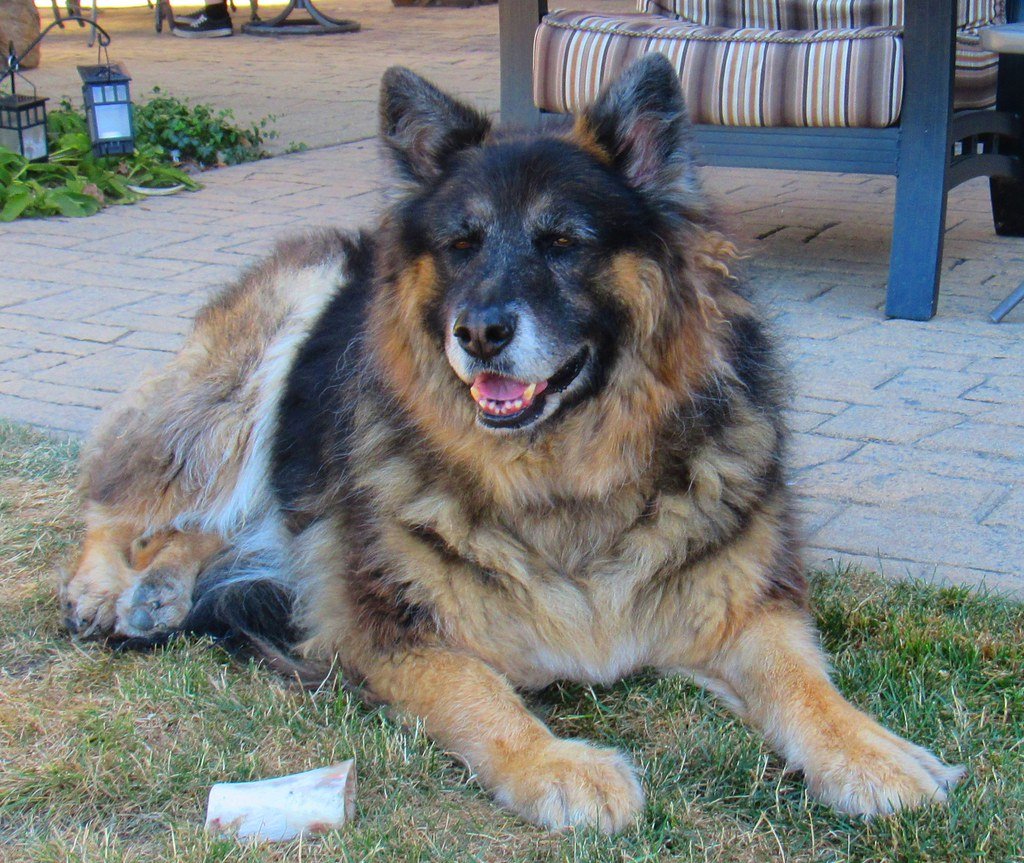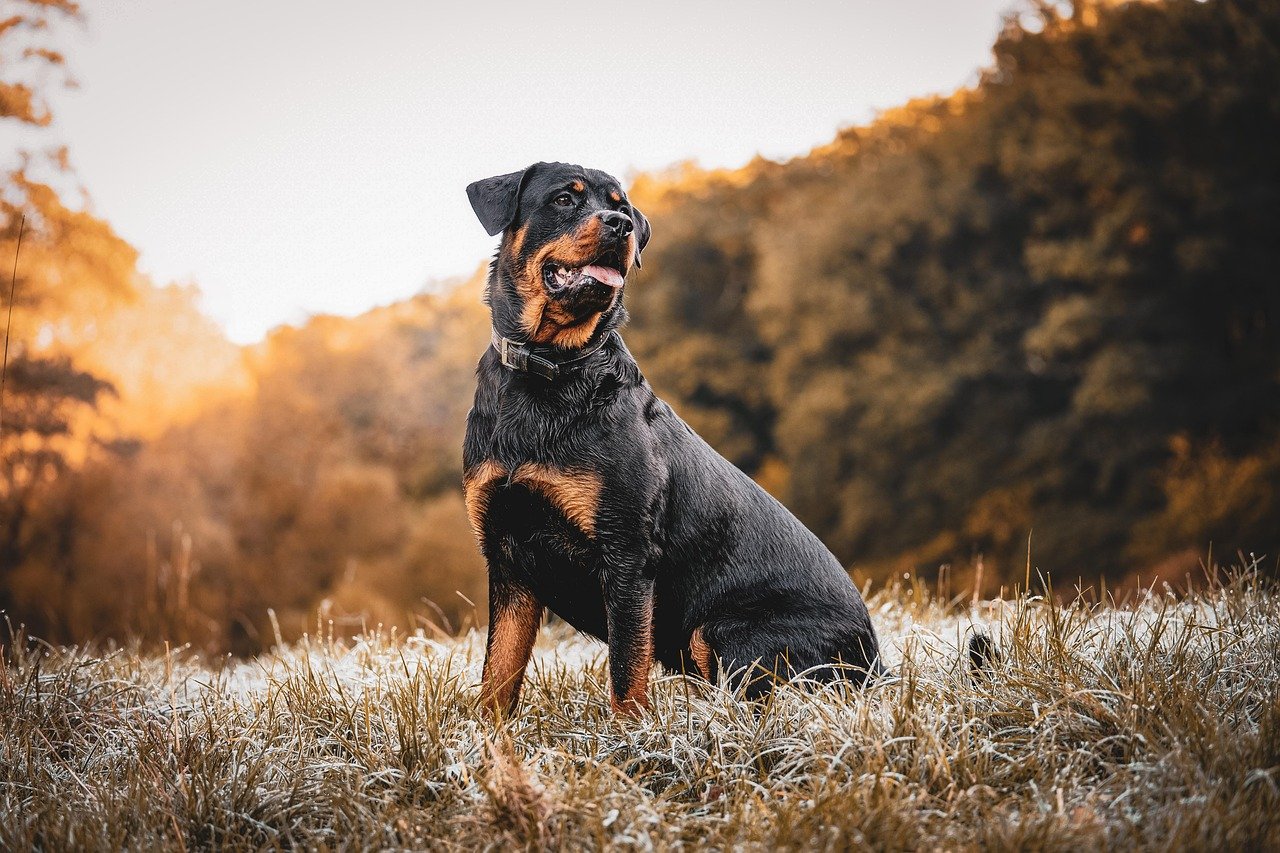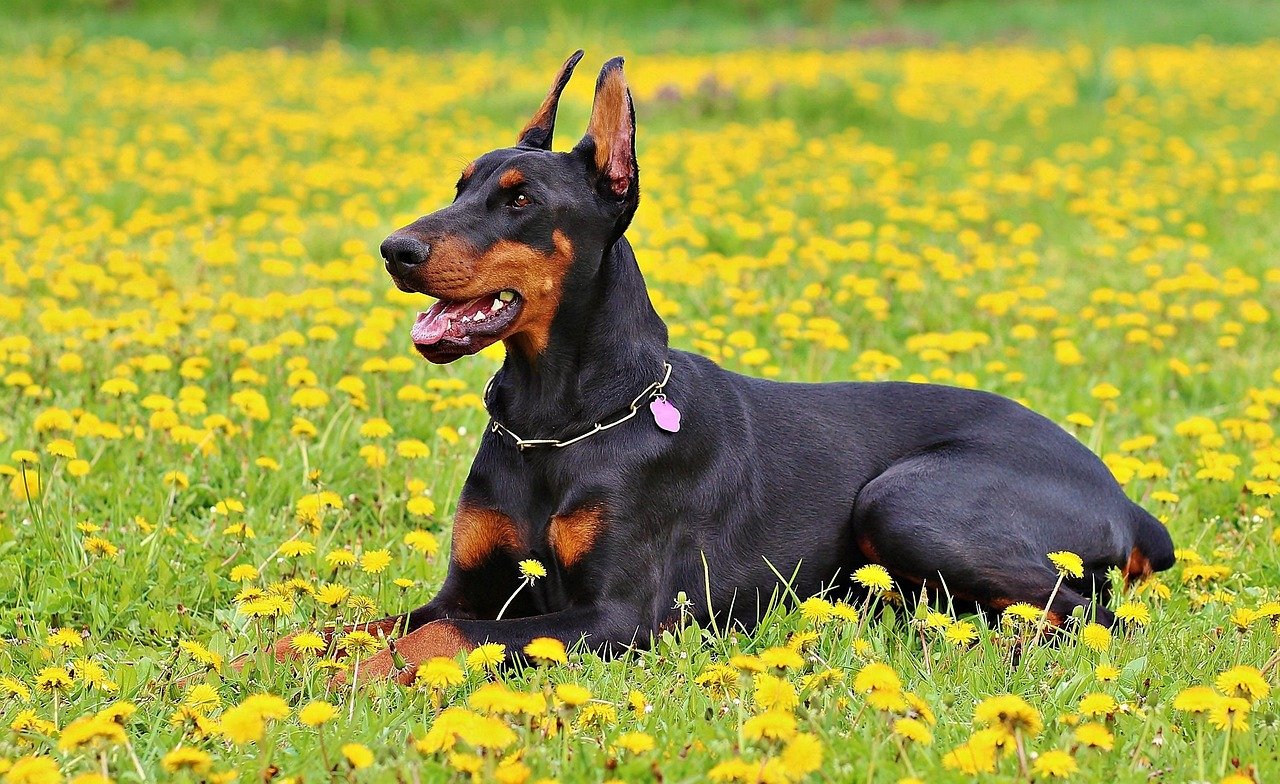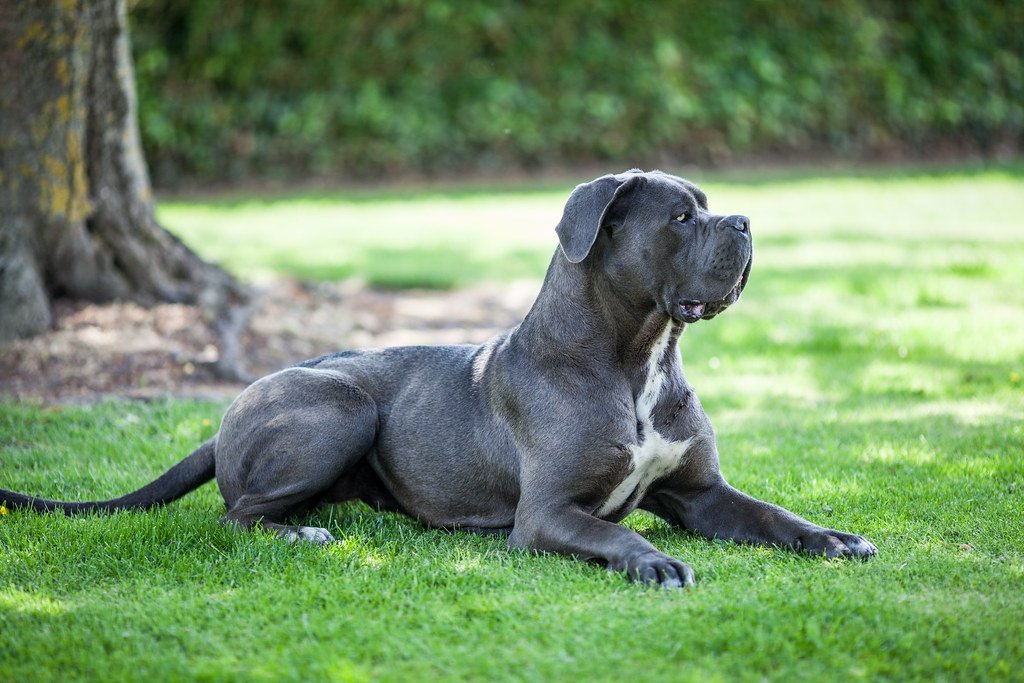When you picture a massive dog weighing over 100 pounds, what comes to mind? Maybe you imagine a gentle giant lounging on the couch or playing fetch with the kids. But here’s what many people don’t realize until it’s too late – these impressive canines need something far more important than size commands respect. Without proper leadership and training, these powerful breeds can become overwhelming forces of nature that even experienced dog owners struggle to manage.
1. German Shepherd: The Powerful Guardian

German Shepherds are large, strong dogs with a lot of energy, and they can be very aggressive if not properly trained and socialized. These intelligent working dogs were originally bred for demanding jobs like herding and protection, giving them an inherent drive to take charge of situations. They have traditionally been used for working purposes, like police K9s, military K9s, or search and rescue (SAR).
Without consistent leadership from an early age, German Shepherds can become territorial and overly protective. They have a lot of energy, they are easily over-aroused, and they have been bred to be protective and territorial, which means they need a lot of positive socialization to do well around other dogs and new people. Their size and strength make any behavioral issues particularly dangerous – a 90-pound dog that decides to lunge or pull can easily knock down an adult.
2. Rottweiler: The Stubborn Powerhouse

Picture this: a muscular, 130-pound dog that looks at you and simply says “no” to your commands. Rottweilers are large, powerful dogs with a strong bite that can easily cause serious injury or death. In addition, they are often aggressive and territorial, making them a serious threat to both people and other animals. These dogs were bred to work independently, which means they naturally question authority.
The Rottweiler requires a natural leader willing to begin training and socialization early on in order to develop a dog with a well-rounded personality. Without firm, consistent training, Rottweilers can become dominant and refuse to follow commands. Their calm exterior can be deceptive – underneath lies a dog with strong protective instincts that need proper channeling.
3. Great Dane: The Gentle Giant That Isn’t Always Gentle

According to the AKC, Great Danes are alert guards, but not overly aggressive. They’re moderately intelligent, but highly stubborn and not easily trained. Don’t let their reputation as “gentle giants” fool you into thinking training is optional. A Great Dane can weigh as much as a small adult human, and when they decide they don’t want to do something, their sheer size becomes a major problem.
These dogs may seem laid-back, but their stubborn streak runs deep. Without proper authority established early, Great Danes can become pushy and demanding. They’ll lean their full weight against you, pull you wherever they want to go on walks, and generally use their size to get their way. They can be stubborn at times. It is caused by its Great Dane parentage that is known for having a strong-willed temperament.
4. Mastiff: The Mountain of Muscle

English Mastiffs can tip the scales at over 200 pounds, making them one of the heaviest dog breeds in the world. As with all Mastiffs, however, it is crucial for this breed to receive firm and authoritative leadership. Bullmastiffs must be well-socialized from an early age in order to prevent aggression. These massive dogs were originally bred as guard dogs, and that protective instinct never really goes away.
The biggest challenge with Mastiffs isn’t aggression – it’s their tendency to become immovable objects when they don’t want to cooperate. Imagine trying to convince a 200-pound dog to move when they’ve decided the middle of your hallway is the perfect spot for a nap. Without established respect and authority, Mastiffs can become stubborn to the point of being unmanageable in daily situations.
5. Saint Bernard: The Drooling Powerhouse

Saint Bernards might have a reputation for being gentle rescue dogs, but don’t be fooled by their sweet expression. Saint Bernard males can weigh anywhere from 140 to 180 pounds (63.5 to 81.6 kilograms) and stand up to 30 inches (76.2 centimeters) high. That’s a lot of dog to control when they decide they don’t want to listen to commands.
Among the best large dog breeds, the benevolent Saint Bernard definitely lives up to its saintly title. These warmhearted dogs are slow, patient, and very responsive to training. However, their patient nature can sometimes translate to selective hearing. When a 180-pound Saint Bernard decides to investigate something interesting across the street, their strength can easily overwhelm an unprepared owner. Early training is essential to prevent these gentle giants from accidentally causing chaos.
6. Doberman Pinscher: The Intense Athlete

Another common police and military breed, the commanding Doberman Pinscher is a fearless and loyal companion. They are enthusiastic workers and are renowned for their ability to learn and retain their training. But here’s the catch – their intelligence and intensity can work against inexperienced owners. Dobermans are like high-performance sports cars; they need skilled drivers who know how to handle all that power.
Without proper leadership, Dobermans can become neurotic and hypervigilant. They’re naturally protective and will make their own decisions about threats if you haven’t established yourself as the leader. Doberman Pinschers were first developed as protection for tax collectors, and they retain their protective instincts and intuitive sense about who is a friend and who is not. This is a serious yet sensitive and intelligent dog who wants to please his owner. That makes them very trainable. The key is channeling that drive correctly from the start.
7. Bullmastiff: The Silent Enforcer

Bullmastiffs were literally bred to tackle poachers and hold them until authorities arrived. Several mastiffs fit into the giant category. Representing the group here is the Bullmastiff, which can weigh up to 130 pounds (58.97 kilograms). Originally bred in the 19th century to guard private English game preserves and country estates, they respond well to training but can be stubborn, so early socialization and training are a must.
The problem with Bullmastiffs isn’t that they’re aggressive – it’s that they’re independent thinkers with the physical capability to enforce their decisions. Without clear leadership, these dogs will make their own judgments about situations and act accordingly. The Bullmastiff is a quiet but intelligent breed with an independent streak. Independent yet fiercely loyal to their families, these dogs make great watchdogs. That independence becomes problematic when they weigh more than most adults.
8. Cane Corso: The Italian Enforcer

Cani Corsi, or Italian Mastiffs, are working dogs with a drive to please their pet parents. However, this “drive to please” comes with a major asterisk – they need to respect you first. Cane Corsos are naturally dominant dogs that were bred to be guardians and protectors. Without proper authority established early, they can become pushy and controlling.
These athletic mastiffs have both the intelligence and physical capability to be problematic when they don’t respect their owner’s leadership. They’re not naturally aggressive, but they are naturally confident and will test boundaries. A 110-pound dog that doesn’t acknowledge your authority can quickly become a household dictator, making their own rules and enforcing them with their impressive presence.
9. Bernese Mountain Dog: The Stubborn Sweetheart

This is an easy-to-train large breed but does require a good leader in order to become a psychologically healthy dog. Bernese Mountain Dogs might look like oversized teddy bears, but underneath that fluffy exterior lies a working dog bred for independent decision-making. These dogs can weigh over 100 pounds and have surprisingly strong wills.
The challenge with Berners isn’t aggression – it’s their selective hearing and stubborn streak. Bernese Mountain Dogs are big dogs with even bigger hearts. Originally bred in Switzerland and brought to the US as farm dogs, these affectionate pups are now mostly family pets. But that doesn’t mean they’ve lost their love for the outdoors – this breed loves to hike with their favorite people, so early leash training and recall are important to teach in puppyhood. Without proper training, they’ll simply ignore commands they don’t feel like following, using their considerable weight to resist any attempts to make them comply.
10. Newfoundland: The Gentle Water Bear

Newfoundlands are often called “nanny dogs” because of their gentle nature with children, but their size alone makes proper training essential. Newfoundlands, also called “Newfies,” are typically 130 to 150 pounds and can stand up to 28 inches (71.12 centimeters) tall. These water-loving giants were bred to work independently, pulling fishing nets and performing water rescues.
The problem with Newfies isn’t that they’re mean – it’s that they’re strong enough to accidentally cause serious problems when they haven’t been properly trained. A 150-pound dog that decides to jump on someone in greeting can knock them down and cause injury. Without proper leadership and impulse control training, even the gentlest Newfoundland can become a liability due to their sheer size and strength. Their independent working heritage means they need clear boundaries from day one.
The Bottom Line on Large Dog Authority

Here’s the truth that many people don’t want to face: large dogs aren’t just scaled-up versions of small dogs. While all dogs need and deserve training and enrichment, it’s essential that training begins early and lasts a lifetime when your dog outweighs members of your family. Giant dogs can weigh as much as some grown adults, so there is little margin for error when it comes to manners. There are things small, or even medium-sized dogs might get away with, such as jumping on people, that would be a significant safety concern if a giant dog did them.
The breeds on this list aren’t inherently “bad” dogs – they’re powerful animals that need experienced, confident leadership. It’s important for all puppies to begin their training and socialization programs starting at the age of 8 weeks – but this is critical for the giant breeds. You really want them to learn polite leash walking and have a foundation of good manners before they are big and strong enough to overpower you (which may come as early as 6 or 7 months, depending on your size). They must be well socialized before they start lunging at visitors and other dogs and can drag you to the target of their playful, reactive, or aggressive behavior. Without proper authority, training, and socialization, even the sweetest large breed can become a household nightmare. The question isn’t whether these dogs can be wonderful companions – it’s whether you’re prepared to be the leader they desperately need from day one.

Andrew Alpin from India is the Brand Manager of Doggo digest. Andrew is an experienced content specialist and social media manager with a passion for writing. His forte includes health and wellness, Travel, Animals, and Nature. A nature nomad, Andrew is obsessed with mountains and loves high-altitude trekking. He has been on several Himalayan treks in India including the Everest Base Camp in Nepal.





